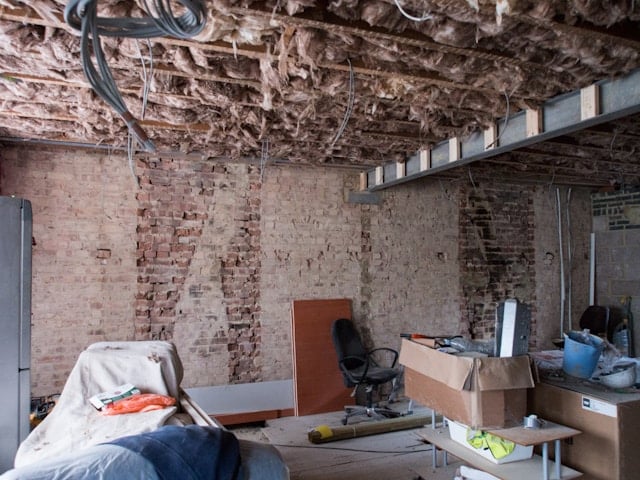The challenge of keeping your wet room floor non-slippery is something many of you face. It’s important to discuss available solutions, given the number of accidents caused by slippery bathroom and shower floors annually. Utilizing anti-slip tiles and products designed to boost grip on your wet room floors could make all the difference.
With a staggering array of materials on the market, from vinyl to porcelain, how do you decide which will provide the best resistance against slips? In this article, we delve deep into the world of wet room flooring to help you make an informed decision.
A lire en complément : How Can You Create a Cost-Effective Soundproof Podcasting Room at Home?
Choosing the Right Material for Your Wet Room Floor
Let’s start by tackling the question of material. Among your options are porcelain and vinyl, each with its unique set of pros and cons.
Porcelain Tiles
Porcelain, a type of ceramic tile, is favoured for its durability and resistance to water. These tiles are fired at high temperatures, resulting in a dense, hard surface that is less porous than other materials. As such, porcelain tiles offer excellent water resistance, making them an ideal choice for wet rooms.
A lire en complément : What Are the Best Practices for Maximizing Daylight in a Basement Studio?
However, porcelain tiles can be tricky to install and may require professional assistance. They can also be slippery when wet, especially if they have a polished finish. To mitigate this, you can opt for porcelain tiles with a textured or matte finish, which provide improved grip underfoot.
Vinyl Flooring
An alternative to porcelain tiles is vinyl flooring. Vinyl is a synthetic material known for its water-resistant properties, making it a suitable choice for wet rooms.
Vinyl floors are softer and warmer underfoot compared to porcelain tiles. They’re also easier to install, often coming in tiles or planks that can be easily clicked into place.
However, vinyl can be prone to damage and may not last as long as porcelain tiles. Its surface can also become slippery when wet, though textured or embossed vinyl can offer better grip.
Enhancing Slip Resistance on Your Wet Room Floor
Choosing the right material is just the first step. To further enhance the slip resistance of your wet room floor, consider the following methods.
Anti-Slip Coatings
One effective way to create a non-slippery tile floor in your wet room is by applying an anti-slip coating. This is a type of product that creates a textured surface on your tiles, providing additional grip.
Anti-slip coatings are available in a variety of forms, including paints, sprays, and sealers. These products can be applied to your existing tiles, making them a cost-effective solution for improving floor safety.
Tile Treatments
In addition to anti-slip coatings, there are treatments specifically designed to increase the slip resistance of tile floors. These products work by altering the surface of the tiles, creating microscopic ridges that provide grip underfoot.
Tile treatments are typically easy to apply and can be used on a wide range of tile materials, including porcelain and vinyl. However, they may alter the appearance of your tiles, so it’s important to test the product on a small area first.
Incorporating Matting and Other Non-Slip Accessories
Lastly, consider incorporating matting and other non-slip accessories into your wet room design.
Non-Slip Mats
Non-slip mats can provide extra grip in areas that are frequently wet, such as the shower or around the sink. These mats feature a textured surface and a rubber backing that prevents them from moving around.
However, mats can pose a tripping hazard if not properly secured, and they need to be cleaned regularly to prevent the growth of mold and mildew.
Grab Bars
Grab bars are another useful accessory for increasing safety in your wet room. These bars can be installed near the shower or toilet, providing support for those who need it.
Make sure to choose grab bars that have a textured surface for improved grip. Also, they should be securely anchored to the wall to ensure they can support the weight of the person using them.
In conclusion, creating a non-slippery tile floor in your wet room involves choosing the right material, enhancing the slip resistance of your floor, and incorporating non-slip accessories. A combination of these methods can help reduce the risk of slips and falls, making your wet room a safer space for everyone.
The Role of Floor Heating in Ensuring a Non-Slippery Tile Floor
The temperature of your wet room floor can play a crucial role in the overall slip resistance of the tile surface. Floor heating can help tackle this issue.
Heated floors are a popular choice for wet rooms. Not only do they provide a warm and comfortable surface underfoot, but they can also help to reduce the amount of standing water on the floor. This is because the warmth from the heated floor can aid in evaporating the water more quickly, reducing the chances of slips and falls.
When considering a heated floor, it’s important to opt for a system designed for wet environments. These heating systems are typically either electric or hydronic (water-based). Electric floor heating is easier to install and tends to heat up faster, while hydronic systems are generally more energy-efficient and might be a better choice for larger wet rooms.
While floor heating can provide additional slip resistance, it’s key to remember that it should be used in conjunction with other anti-slip measures. A combination of floor heating, the right floor tiles, anti-slip coatings or treatments, and non-slip accessories will provide the most comprehensive solution for preventing slips and falls in your wet room.
The Impact of Natural Stone Tiles on Slip Resistance
Natural stone tiles are another option for wet room flooring. These tiles are renowned for their beauty and uniqueness, as no two tiles are exactly alike.
While natural stone tiles such as slate, limestone, and travertine are often used in wet rooms due to their aesthetic appeal, they also offer a considerable level of slip resistance. These tiles usually have a naturally textured surface, providing excellent grip, even when wet.
However, there are a few things to consider before choosing natural stone for your wet room floor. First, these tiles require regular sealing to maintain their resistance to water and prevent staining. Second, some types of natural stone can be relatively soft and susceptible to scratches and wear over time.
Despite these potential drawbacks, natural stone tiles can be an attractive and effective flooring choice for wet rooms, particularly when combined with other anti-slip measures.
Conclusion
Ensuring that your wet room is safe and non-slippery doesn’t have to be a daunting task. By choosing the right flooring material, whether it’s porcelain, vinyl, or natural stone, and pairing it with effective anti-slip treatments, you can significantly increase the slip resistance of your wet room floor.
Don’t forget the role of floor heating in reducing standing water and enhancing comfort, as well as the importance of non-slip accessories like grip mats and grab bars.
Creating a non-slippery tile floor in a wet room might require a bit of planning and investment, but the safety and peace of mind it provides are well worth it. By prioritizing slip resistance in your wet room, you can help protect yourself and your loved ones from the risk of slips and falls.











